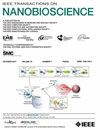Multiple Heterogeneous Networks Representation With Latent Space for Synthetic Lethality Prediction
IF 4.4
4区 生物学
Q1 BIOCHEMICAL RESEARCH METHODS
引用次数: 0
Abstract
Computational synthetic lethality (SL) method has become a promising strategy to identify SL gene pairs for targeted cancer therapy and cancer medicine development. Feature representation for integrating various biological networks is crutial to improve the identification performance. However, previous feature representation, such as matrix factorization and graph neural network, projects gene features onto latent variables by keeping a specific geometric metric. There is a lack of models of gene representational latent space with considerating multiple dimentionalities correlation and preserving latent geometric structures in both sample and feature spaces. Therefore, we propose a novel method to model gene Latent Space using matrix Tri-Factorization (LSTF) to obtain gene representation with embedding variables resulting from the potential interpretation of synthetic lethality. Meanwhile, manifold subspace regularization is applied to the tri-factorization to capture the geometrical manifold structure in the latent space with gene PPI functional and GO semantic embeddings. Then, SL gene pairs are identified by the reconstruction of the associations with gene representations in the latent space. The experimental results illustrate that LSTF is superior to other state-of-the-art methods. Case study demonstrate the effectiveness of the predicted SL associations.利用潜空间的多重异构网络表示法进行合成致死率预测
计算合成致死率(SL)方法已成为为癌症靶向治疗和癌症药物开发识别SL基因对的一种有前途的策略。整合各种生物网络的特征表示对于提高识别性能至关重要。然而,以往的特征表示方法,如矩阵因式分解和图神经网络,都是通过保持特定的几何度量将基因特征投射到潜在变量上。目前还缺乏同时考虑多维度相关性和保留样本空间与特征空间中潜在几何结构的基因表征潜在空间模型。因此,我们提出了一种利用矩阵三因子化(LSTF)对基因潜空间进行建模的新方法,以获得具有合成致死率潜在解释所产生的嵌入变量的基因表征。同时,将流形子空间正则化应用于三因子化,以捕捉潜空间中带有基因 PPI 功能嵌入和 GO 语义嵌入的几何流形结构。然后,通过重建潜空间中与基因表征的关联来识别 SL 基因对。实验结果表明,LSTF 优于其他最先进的方法。案例研究证明了预测 SL 关联的有效性。
本文章由计算机程序翻译,如有差异,请以英文原文为准。
求助全文
约1分钟内获得全文
求助全文
来源期刊

IEEE Transactions on NanoBioscience
工程技术-纳米科技
CiteScore
7.00
自引率
5.10%
发文量
197
审稿时长
>12 weeks
期刊介绍:
The IEEE Transactions on NanoBioscience reports on original, innovative and interdisciplinary work on all aspects of molecular systems, cellular systems, and tissues (including molecular electronics). Topics covered in the journal focus on a broad spectrum of aspects, both on foundations and on applications. Specifically, methods and techniques, experimental aspects, design and implementation, instrumentation and laboratory equipment, clinical aspects, hardware and software data acquisition and analysis and computer based modelling are covered (based on traditional or high performance computing - parallel computers or computer networks).
 求助内容:
求助内容: 应助结果提醒方式:
应助结果提醒方式:


